By Tom Diegel — When one thinks of great bike touring destinations, there are some big classics: Tuscany, Provence, the Alps, Neew England, the Great Divide trail, Bike Centennial transcontinental, coast highway 101, the Pyrenees, northern Ethiopia…wait a minute! Northern Ethiopia? In Africa?! Riding on goat paths and staying in mud huts?!!? Classic?!
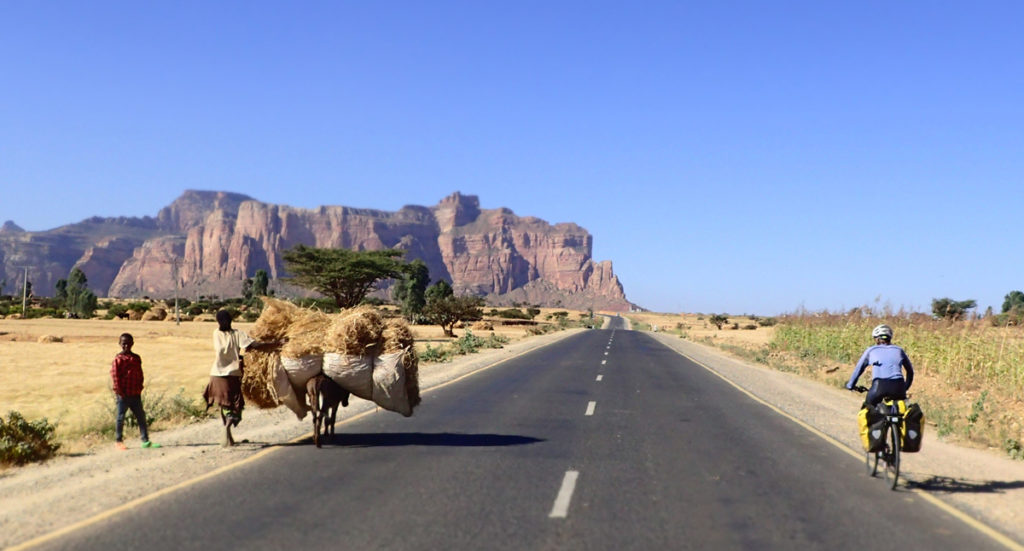
Well, while Ethiopia may not yet be known as a classic cycling destination yet, it has all the elements in place: a rich culture, mountainous terrain, incredible food, super friendly people, a fascinating history, winding lonely roads, very little traffic and a tolerable level of adventure. All that is needed for a great cycling destination.
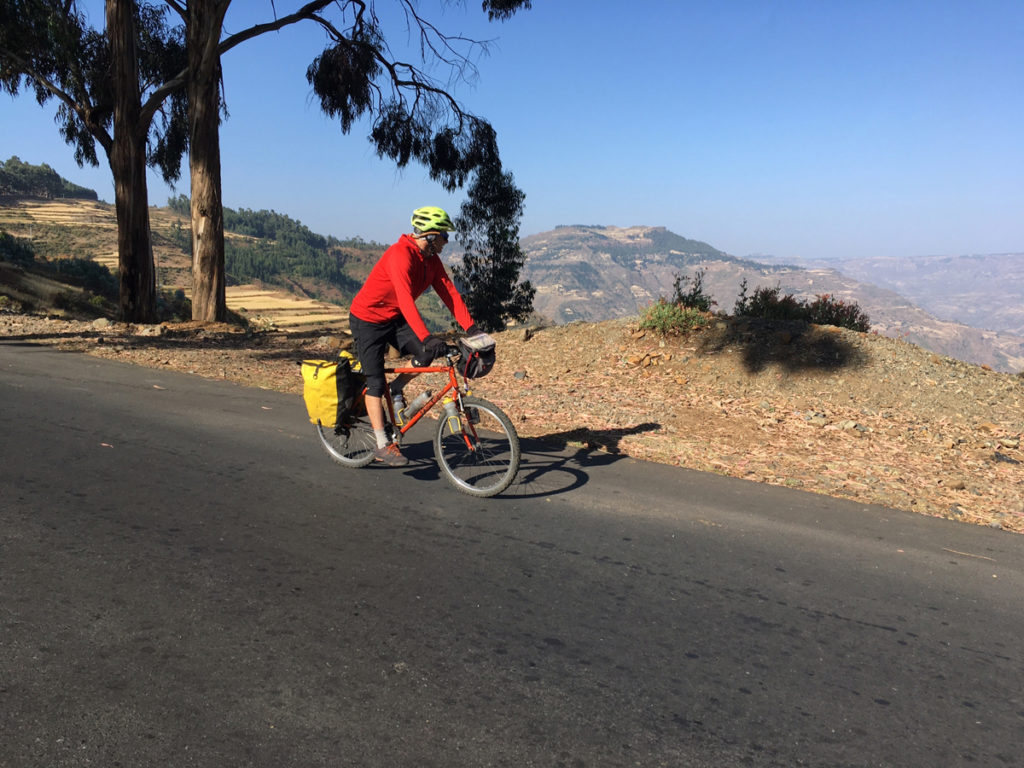
Our journey to ride in Ethiopia started on a river trip; I had an opportunity to float down the Blue Nile river as it makes its way from Lake Tana (about half the size of the Great Salt Lake, in a good year) south and then west into Sudan before meeting the White Nile and becoming The Nile. It’s a long ways to Africa (the flights involve going to Europe first and then carrying on from there) and it seemed warmer there in November than the typical early winter doldrums in Utah, so we decided to look into doing a bike tour as well. Tadele Travel is owned by Richard, a former Olympic marathoner for England who became friends with Haile Gebreslassie, who is almost-inarguably the best distance runner of all time and an Ethiopian national hero. Haile had invited Richard to Ethiopia and he became enamored with the country and wanted to introduce more people to its unique culture, and since he was an athlete we knew that we could take his word if the routes he suggested would be fun and challenging. And soon enough Richard delivered us a document with a suggested route in the northern part of the country.
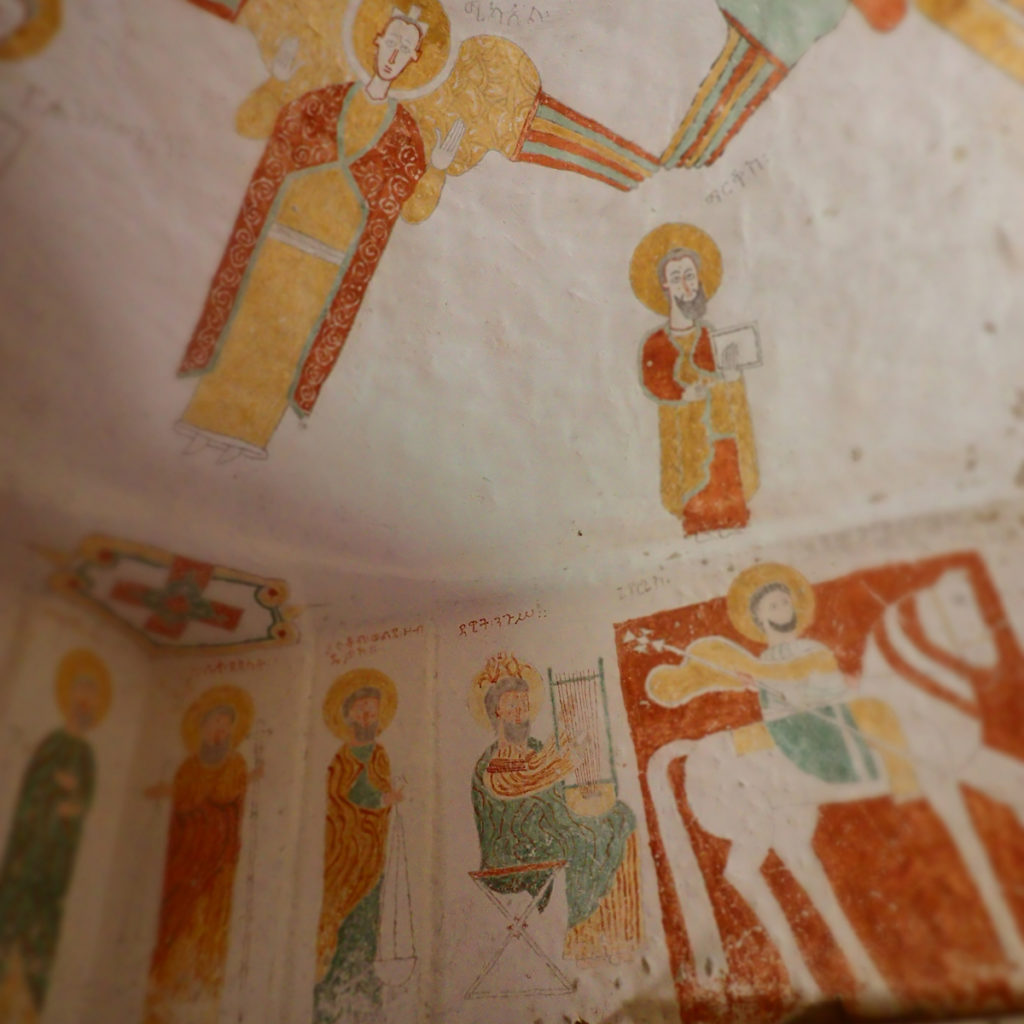
Ethiopia is big: about the size of Utah, Colorado, Nevada, and Arizona combined. Most of the south is pretty low elevation and is thus pretty hot, but the northern highlands are in the 5000-8000 foot range and thus are pleasantly cool, and like the Intermountain West has its “monsoon” season at the same time as ours, and beyond that it’s predictably dry. And it has an incredible network of roads: even though Ethiopia is one of the few African countries that wasn’t colonized by European countries, the one that tried – Italy, twice – did have enough influence there that it built a great network of roads, using Italian mountain road mastery. And while the original northern roads were gravel, over the last 10 years the “benevolence” of the Chinese government interested in improving infrastructure in resource-rich Africa resulted in all those gravel roads getting paved, but there are very few cars that travel the wonderful Sino-Italian roads, which makes for incredible cycling.
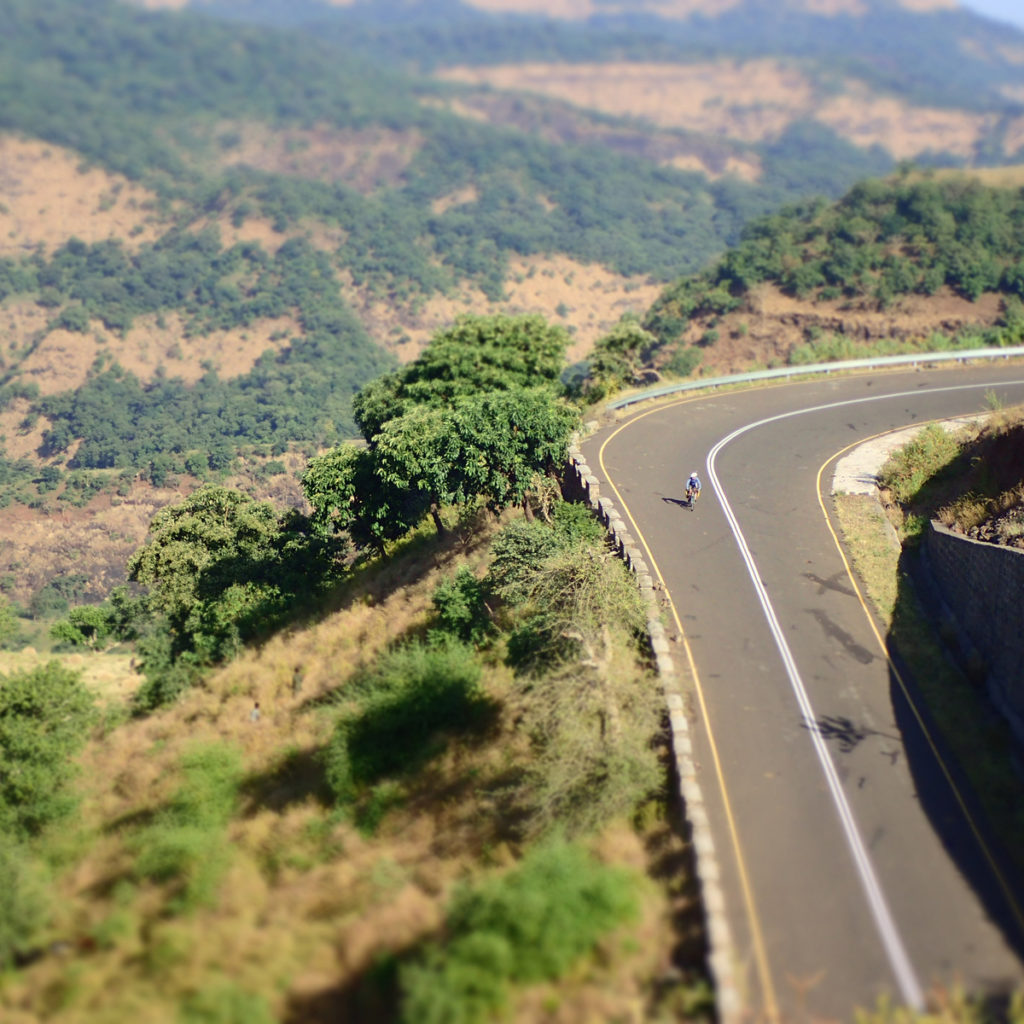
My wife Ashley made the long journey from the states to meet me in the capital city of Addis Ababa, toting both her bike and mine, and we transitioned to a domestic flight to take us to Makele, the gateway to the northern state of Tigray. Tigray is the region in the far north of Ethiopia, and it is famous for its natural beauty that comes from big sandstone walls and mountains that are quite reminiscent of Utah’s own redrock desert.
After an afternoon and night of rest for Ashley to bust out of jet lag, we rolled out of Makele. A little ways up the first climb we were surprised to see a small pack of full-on roadie guys doing intervals on the 1000′ climb on the outskirts of town. And even more surprised to see another posse, and then another. Apparently Makele is a hotbed of road cycling, and it was odd to see these kitted-out guys on sweet bikes amongst the other rattletrap bikes that plied the town roads. I tried to get a pic but they flew past us in both directions too fast for me to grab my camera!

It is not a solid Ash and Tom bike tour without a major mechanical issue to happen in the first bit (broken derailleur in Boulder, UT, a fallen-off crank near Price, a frozen freehub in Vietnam), and this adventure began accordingly. I was rolling along when suddenly my rear wheel skidded to a stop, almost throwing me over the bars. I glanced back and my heart sank: a split rim.
Old school (i.e. non-disk) brakes wear down rims – especially in places like sandy southern Utah – and I hadn’t noticed before the trip that my rim was deeply grooved. The only fix was a new wheel, and the weight of being in Africa with a blown rim at the beginning of our trip crashed down on me pretty hard, but as I was lamenting my misfortune Ashley was flagging down a passing pickup. This was to become our first experience with the legendary Ethiopian graciousness; these locals were happy to give us a ride to the next town, even as I was pessimistic that we could find wheel-building salvation. However, with our new friends as translators, we were able to find the town’s local bike mechanic who took one look and said “no problem.” The next thing I knew he was stripping my wheel of spokes. I’ve seen other people tape the new rim to the old and move spokes over, but apparently that’s not the Ethiopian way. Once he had it stripped he leapt on his bike, raced off, and a few minutes later returned with a brand new rim. An hour later it was laced up and ready to go. To be sure, it took a lot of finessing and I still have a bit of a lump-lump in the wheel – which didn’t help a butt that had its saddle-toughness after a month+ off the bike – but it spun, and that’s all I needed. And I guess one gets what one pays for; the whole deal was about $10, and I was a happy customer pedaling on to our next destination.
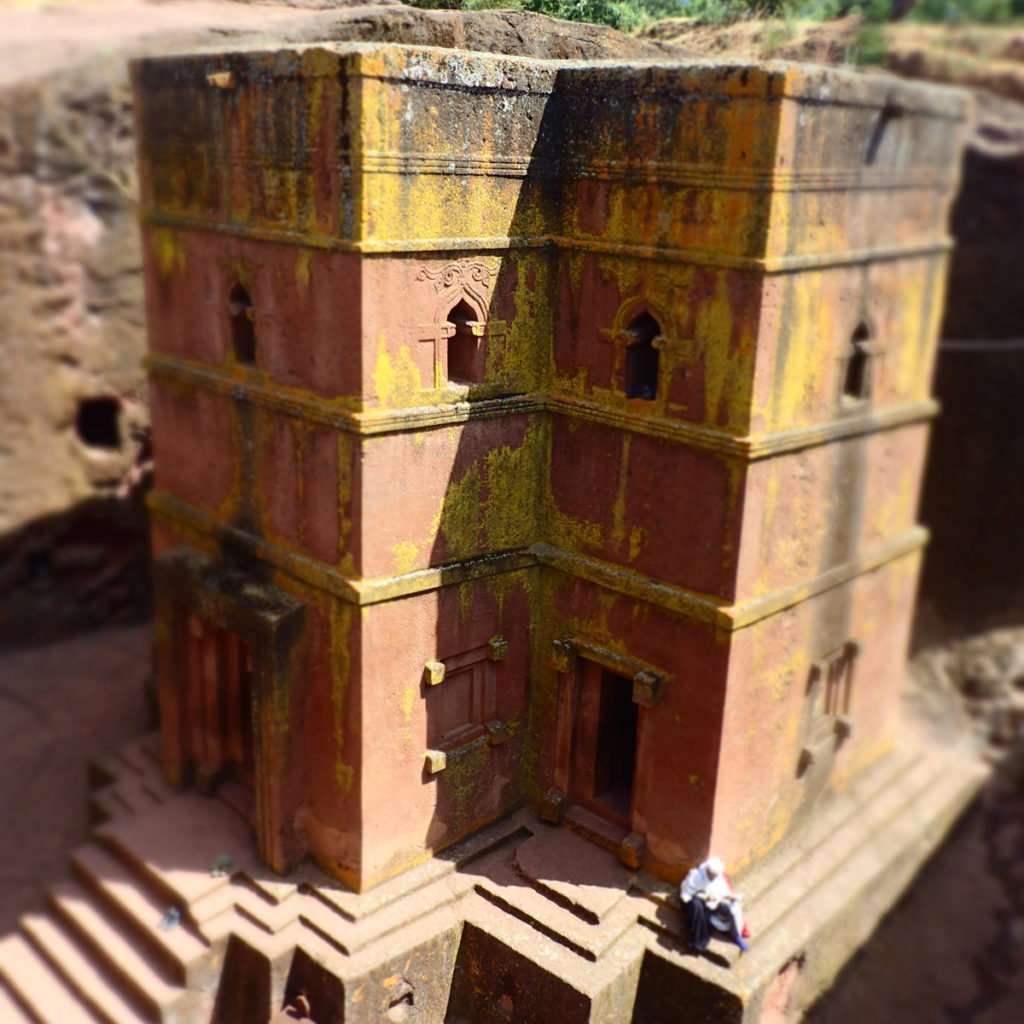
Tigray is famous for it’s “rock hewn” churches. While some folks say that the outdoors is their church, the Ethiopians of the 6th century decided to take that concept literally; instead of putting up houses of worship in the desert they actually carved entire churches into walls, with some requiring a thousand-foot climb to get there! Hiking to a handful of churches made for a great active rest day off the bikes, and though it may seem a bit out of character, we found two European-owned lodges in the area that were as nice in every way as American BnB’s.
Richard had suggested that we spend the bulk of our trip in the Tigray region since that’s where he runs his tours, but as we pored over the maps we realized that by doing so we’d miss the Simien mountains, one of the most prominent ranges in Africa well known for vast views and as a refuge for mountain baboons, ibex, and African wolves. Talking with locals, however, we realized that there was a bit of a catch; while the vast majority of the roads that we’d be on would still be the great Ethiopian rolling new pavement, there was a 5000 foot climb on gravel road of unknown condition to reach the national park. But we decided to give it a go.
Richard also likes to run his trips in the north to avoid rock-throwing kids. Surfing the internet we saw that adolescent boys had a tendency to throw rocks at cyclists, but Richard correctly told us that in “his” zone they didn’t do this. However, because we made the conscious decision to make a big modification to the recommended route we moved out of the typical tourist zones and got into rural areas where indeed we had some young boys throw rocks at us, but we realized that it was more annoying than dangerous. I actually got hit once, and in a rage I surprised the kids by veering of the road and chasing them on my bike through a field (which they thought was hilarious) and when I caught back up with Ash she told me about her interaction with one kid: he was running alongside her grabbing at her rack so she veered into him, he turned to dash into the adjacent field but didn’t take into account that Ethiopians tend to build (very effective) “fences” out of super-thorny acacia tree branches, and the kid did a full-on belly flop onto a pile of acacia (which he thought was as hilarious as we did).
After a few more days of excellent riding we finally arrived at The Big Climb into the Simien Mountains, and it was on this long, grinder that we had another memorable experience with the Ethiopian hospitality. Knowing that I rarely let a bike tour go by without at least one day of solid bonkage and dehydration I tried to camel up on food and water, but to no avail; I was fading down the rabbit hole about two-thirds of the way up the climb. We stopped for a rest and I tried to hammer down more water, but within a few minutes I was pedaling squares again. As fate would have it, we came upon a fresh water spring; one of the only springs we saw on the trip. However, this didn’t cut it. I needed more than water, and things were a bit grim; there was almost no traffic so it wasn’t very hitchable, we still had a ways to go, it was getting late, and my legs were cramping from my ass to my feet. A car came along with two Ethiopian couples who stopped to also water up at the spring, and of course asked if we were ok (since I was pretty much pale as a ghost and collapsed on the ground) and Ash said “Do you happen to have any Cokes?” Alas they did not, and drove off. I tried to ride again, cramped, and retreated back to the cool shade of the spring, while Ash tried to figure out the next move. But suddenly, about 20 minutes later, the car we had seen earlier came barreling back down the road, the guy leaped out, and in his hand were…..two ice cold Cokes! Such great people, and within 5 minutes I was able to leap onto my steed and rage up the last third of the climb!
The town of Lalibela is a staple on the Ethiopian tourist circuit, and it was our ultimate destination as well. A beautiful town tucked into the mountains, it is also famous for its own rock-hewn Christian churches, but instead of digging into the softer sandstone as the Tigray churches were, Lalibela’s churches were excavated out of hard basalt hillsides in the 12th/13th century by people beholden to King Lalibela – the king of the Ethiopia region at that time – who wanted to make Ethiopia’s churches more impressive than those in Jordan. The ability to create these full-size temples is mind boggling even considering today’s available technology, much less what they were able to accomplish 800 years ago. And according to local lore it took “only” 20 years to build a dozen churches!
And while Lalibela is very much a tourist-oriented town, there’s very little hustle associated with it and as noted the Ethiopians are very gracious hosts. As such, we decided that to be best appreciate the coolness of Lalibela we’d get a guide, and thus we were introduced to Getay, who indeed proved to be not only a wealth of information about Lalibela as we expected, but he was also very willing to talk about life, politics, and warfare in Ethiopia, which was rare; as well as helping to navigate the local market. Getay was a soldier in two different wars (the first against the ruthless communist Derge, who created the infamous famine in the 80’s, and the second against the Eritreans), loves Lalibela, and is taking steps to start a new solar panel business, which has a lot of potential in the high desert. Getay took us to several churches that were off the beaten path, including one that had a locals-only once-per-year festival, and another that houses over 5000 mummies of worshippers who wanted to spend their eternities interred on the surface next to the church. And Getay was kind enough to take us on a dawn patrol hike into the mountains the morning of our flight home; a nice way to complete our Ethiopian adventure.
Yes, there are many places to experience by bike both near and far, and flying over idyllic western Europe to ride in eastern Africa seems a bit unlikely, yet a bike tour in northern Ethiopia is an unusual and worthy adventure, and you’re sure to meet some of the world’s nicest people.

